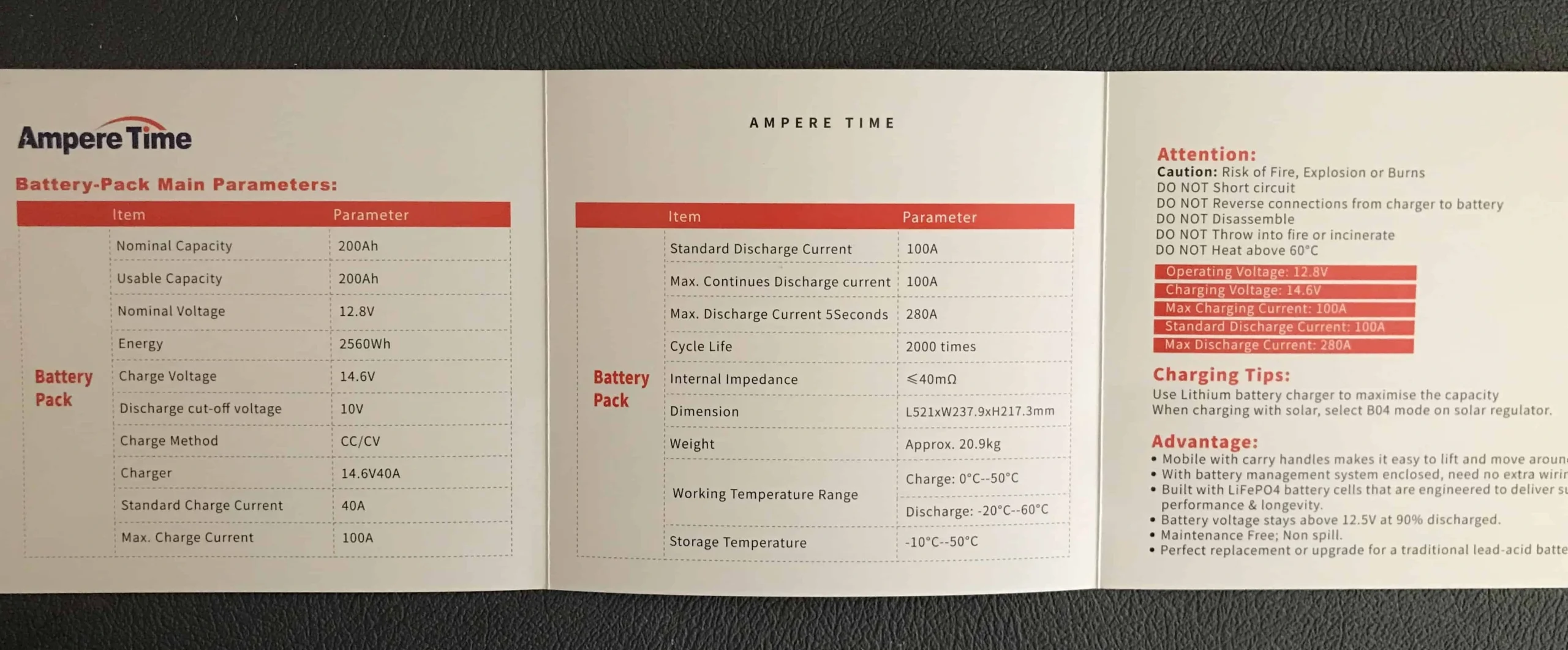Use our battery charge and discharge rate calculator to find the battery charge and discharge rate in amps. Convert C-rating in amps.
Battery charge and discharge rate calculator
Note: Use our solar battery charge time calculator to find out the battery charge time using solar panels.
If the C-rating is mentioned as C/n (any number), in this case, C = 1. (E.g, C/2 = 1/2 = 0.5C).
- C/2 = 0.5C
- C/5 = 0.2C
- C/10 = 0.1C
- C/20 = 0.05C
how to use this calculator?
1 - Enter the battery capacity and select the unit type. For example, If you have a 50 amp hour battery, enter 50 and select Ah.
2 - Enter the battery c-rating number (mentioned by the manufacturer on the specs sheet of your battery).
Enter "Calculate" button to find out the results.
example

where to find battery c rate?
Generally, you will find the battery c rate on battery label or on the specs sheet of your battery.

As you can see, the battery c rating is mentioned as "max. charge current" and "max. discharge current".
Battery C rate chart
The below chart shows the conversion of different c-ratings on batteries into charge/discharge time.
| Battery C-rating | Charge and Discharge Time |
|---|---|
| 30C | 2 minutes |
| 20C | 3 minutes |
| 10C | 6 minutes |
| 5C | 12 minutes |
| 3C | 20 minutes |
| 2C | 30 minutes |
| 1C | 1 hour |
| 0.5C or C/2 | 2 hours |
| 0.2C or C/5 | 5 hours |
| 0.3C or C/3 | 3 hours |
| 0.1C or C/10 | 10 hours |
| 0.05C or C/20 | 20 hours |
Battery c rate meaning: chartHow to convert c-rating to amps?
Converting the C rate of your battery into amps will give you the recommended charge and discharge current (amps).
Formula: Battery charge and discharge rate in amps = Battery capacity (Ah) × C-rate
example #1: 0.05C rate to amps
let's say you have a 100ah lead-acid battery.
- Battery capacity: 100ah
- C-rating: 0.05C or C/20
- C-rating in amps: 100ah × 0.05C = 5 amps
100Ah lead-acid battery has a recommended charge and discharge rate of 5 amps
example #2: 0.5C or c/2 rate to amps
let's say you have a 100ah lithium battery.
- Battery capacity: 100ah
- C-rating: 0.5C or C/2
- C-rating in amps: 100ah × 0.5C = 50 amps
100Ah lithium-ion battery has a recommended charge and discharge rate of 50 amps
How to convert c-rating to time?
Converting the C rate of your battery to time will let you know your battery's recommended charge and discharge time.
Formula: C-rate in time (hours) = 1 ÷ C-rate
Formula: C-rate in time (minutes) = (1 ÷ C-rate) × 60
Example #1: 0.05C to time
- 1 ÷ 0.05C = 20 hours
- (1 ÷ 0.05C) × 60 = 20 × 60 = 1200 minutes
Example #2: 0.5C to time
- 1 ÷ 0.5C = 2 hours
- (1 ÷ 0.5C) × 60 = 2 × 60 = 120 minutes
don't charge or discharge your battery at a higher rate
The chemistry of battery will determine the battery charge and discharge rate. For example, normally lead-acid batteries are designed to be charged and discharged in 20 hours. On the other hand, lithium-ion batteries can be charged or discharged in 2 hours.
You can increase the charge and discharge current of your battery more than what's recommended. But, as a result, this will affect the charge or discharge time period.
Also, charging or discharging your battery at a higher rate will increase the temperature in the battery's internal cells, which will cause power losses. Doing this more frequently will decrease the battery charge holding capacity.
lead acid and lithium battery c-rate chart
The below chart shows the c rating of lead-acid and lithium battery.
| Battery Type | C rating |
|---|---|
| AGM (lead acid) | 0.2C (5 hours) |
| Gel (lead acid) | 0.05C (20 hours) |
| FLA (lead acid) | 0.05C (20 hours) |
| Lithium (LiFePO4) | 0.5C (2 hours) |


